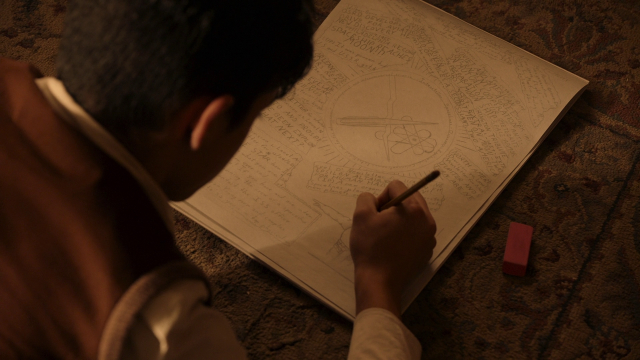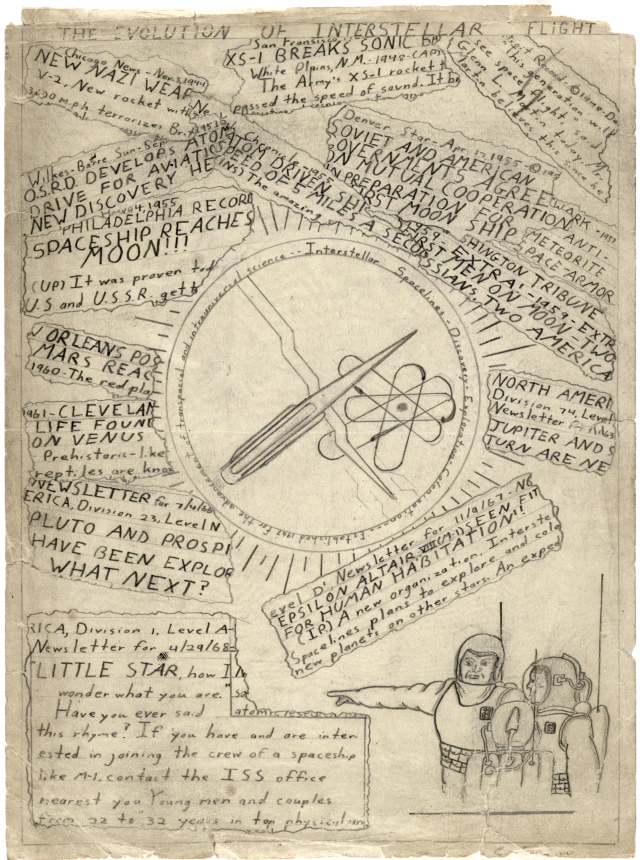Cosmos: Possible Worlds is a must-watch look at where we've been and where we could go
Cosmos: Possible Worlds gives me a reason to live. It is a catalog of our greatest triumphs and some of our worst downfalls. It is a companion and addition to past science media (including both prior Cosmos programs), meaning there’s something new here for all but the most well-read student of science and history.
Telling untold stories seem to have been the mission of this season. Science does not belong to white men, and Neil deGrasse Tyson broadens the definition of science to include people from before recorded history. Even when telling stories about white men, usually they are obscure figures, unknown even in their own time. We already know Isaac Newton’s story. Tyson makes conjectures about our past, inviting the viewer to “come with” him and imagine a world better than what we have today. These conjectures are 4 parts science for every 1 part optimism. We have a reason to be hopeful.
This is the third Cosmos series. Tyson hosted the previous revival in 2014, a sequel to the masterpiece by Carl Sagan in the 80s. The 2014 series was too close to Sagan’s original (even though I saw the 2014 one first); it was more dedicated to repeating what Sagan did than having its own identity. It soared where this one does: in telling the stories of the past, in breaking away from the scientific “facts” we now know and reminding us when they were just ideas and experiments from people who didn’t know the outcome. Tyson points out that what we know now is our best understanding, subject to change with new data.
These attributes are what makes the original Cosmos must-watch even 20 years after its last corrective-subtitle update. Science is more than the facts of the day, it’s how we arrive at the facts of the day and make the facts of tomorrow even clearer. Great as Cosmos was, Possible Worlds still has too much Sagan adoration. But it feels less frequent than the last season. They treat Sagan as a past thinker just like Isaac Newton or Christiaan Huygens, which is an effective framing.
I cried watching at least 9 of the 13 episodes. I cried over Sagan. Tyson explains Sagan’s optimism for the future using an actual drawing he made as a boy. It “presents a vision for space flight as a collage of newspaper headlines from the future.”

Sagan making his drawing (as reenacted in Possible Worlds).


As a pre-teen in the 1940s, as the War ended and the Cold War began, he imagined a peaceful space program less than a decade in the future.
In a world racked with cynicism, Possible Worlds is a breath of fresh air. Rather than mope about impossibilities, Tyson is committed to making them possible. On Sagan, Tyson says: “He didn’t just want to go in his imagination. He wanted to really go. … And he knew that the only way to do that was to become a scientist.”
The only way we get to utopia is with science. Not just science but funded science. Heeded science. Desired science. We’ve stopped dreaming, and we pass on our despair to our children. Our kids would rather be streamers than astronauts. A better world is possible, but we have to want it.
As I watched, I wondered why all science education wasn’t like this. Growing up, I lived through a kind of post-Bill-Nye wave of scientific communication, especially for children. It was great. I’ve always had a respect and adoration for science. But not every kid was like me, and that adoration bumped up against occasional checked-out teachers in my K12 schooling. It’s a topic for another day, but I wonder if the traditional school model should be reworked in the age of technology. Possible Worlds brings A-list effects and C-list stars to scientific topics. Why can’t we learn everything that way? We pay millions of teachers 50 thousand dollars a year. And most of them are amazing, and most of them are putting in effort that should be met with double their current salary, but there are always less excited ones in the bunch. 100 teachers teaching the same topic might be worse than Hollywood-level effects and scripts.
Science is more than pretty videos. There’s math and rigorous adherence to empiricism. But there are probably enough eye-popping experiments and stories to last a year of public education, if not longer. We idolize and fund tech giants, sports stars, and actors. It’s no wonder that’s what our kids want to be and that’s where the jobs are. There’s no cliff where science becomes hard and not fun. If such a cliff did exist, we still don’t need 300 million American scientists. We need 300 million Americans who respect science enough to pay the salaries of 30 million scientists. (We have 7 million scientists and engineers currently, with under 1 million doing physical, life, and mathematical sciences.) You have to talk to the right people. My college professors, whose work ranged from nuclear physics to statistical astronomy, were passionate about their work and would talk endlessly about it. Their work helps understand the fabric of the universe as well as locate potentially Earth-like planets. Nothing they do is boring, but nothing they do is featured on primetime TV.
Climate change casts the longest shadow over the series, and it’s probably the least effective piece of Possible Worlds. An incredible segment uses a 1967 climate model and shows how accurate it’s been to the present day. But as a product of capitalism, making a show for Fox (soon Disney), Tyson is unable or unwilling to identify climate change’s root cause or wealthiest defenders. He cannot identify a way to enact change beyond “people demanding” it; the call to action is nebulous while our planet boils. Although the comparisons to past crises such as the ozone hole are helpful, their usefulness only goes so far.
Susan Solomon, an atmospheric chemist who led ozone hole and climate research, said this in 2019:
The ozone [issue] already had a lot of momentum behind doing something about it, particularly because getting rid of the CFCs in spray cans was a very easy thing to do. Consumers turned away from spray cans in the 70s even before they were banned in this country. There was an easy thing that a consumer could do. You just stopped using the spray can and start using the pumps and roll-ons for underarm deodorant.
We just don’t have that same kind of very easy substitution when it comes to climate change. There are things that a consumer can do, but it’s not that easy to decide you’re going to never drive a car and ride a bike instead. It’s not that easy to switch to solar. This problem requires not just people caring, but government action, changing technologies, a total overhaul of the energy system.
I don’t just don’t see a good parallel right now between what’s happening today and the ozone issue.
Even when he retreads a Sagan segment on humanity’s survival odds, Tyson gives us a coin-flip chance of making it another 100 years. A dire prediction, yet he doesn’t seem to care. My personal belief is that capitalism must be weakened though unions and protests or completely destroyed if we have a shot at mitigating climate change. Billionaires gain the most from climate change, so we must make it harder to be a billionaire. The slow roll of climate reforms are no match for the runaway feedback loop we are in.
The other major misstep is having Tyson involved at all. I say things like “Tyson says” for convenience, but he didn’t write the program. It doesn’t seem he chose the stories, framing, or text. He’s an excellent communicator but also an alleged rapist. Multiple women have accused him of sexual harassment. I’m writing this review and praising it at all because it’s possible to watch the show without supporting Tyson. Possible Worlds is so good that if there’s a way to watch it and look past the awful host, you should.
Errors aside, Cosmos: Possible Worlds is an all-time classic. It tells us we were not put on this Earth to make money. We used to know this, but have forgotten. There are trillions of worlds out there waiting for curious people to know them. Even on Earth there is so much we don’t know. Possible Worlds gives just 10 hours of insight, yet opens up a lifetime before you. Possible Worlds competes with the original and often surpasses it. There’s nothing else like it, and that’s a problem.